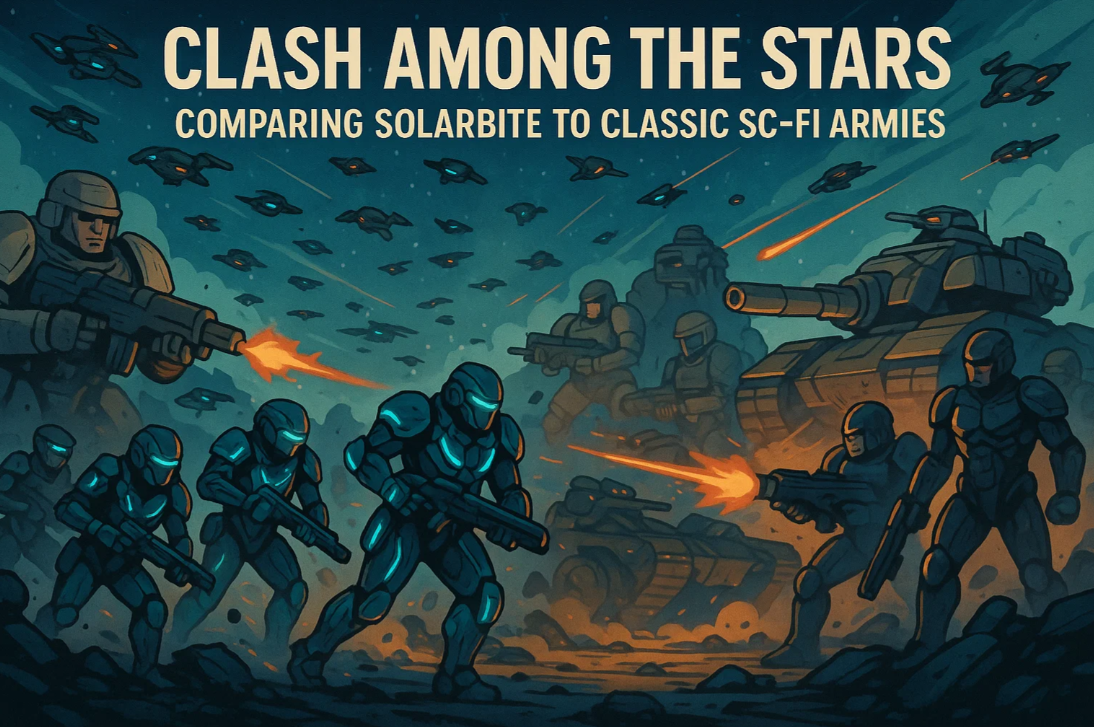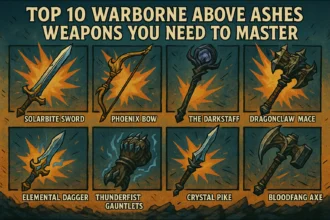When it comes to science fiction games, few things capture the imagination more than the vision of futuristic armies clashing across alien landscapes. Recently, Warborne Solarbite has emerged as a unique contender in the tactical sci-fi genre. Players are starting to ask: how does Solarbite measure up against the iconic armies we’ve seen in classic sci-fi universes? This article dives deep into the comparison, exploring design philosophy, tactics, and narrative flavor.
The Rise of Warborne Solarbite
Warborne Solarbite represents a modern reimagining of spacefaring militaries. Rather than sticking to the traditional “uniform army of soldiers in metal suits,” Solarbite introduces highly specialized squads with modular loadouts and adaptive combat strategies. Its unit variety, from aerial drones to heavily armored shock troopers, gives players flexible options in both offense and defense.
Unlike older franchises that focus purely on firepower, Solarbite emphasizes synergy. Squads are designed to complement each other, rewarding players who think several moves ahead. This creates a tactical depth that stands apart from many straightforward shoot-and-advance classics.
If you’re looking for a strategy game that goes beyond the traditional mold of sci-fi warfare, Warborne Solarbite is a refreshing choice. Its emphasis on synergy, tactical foresight, and specialized unit design makes every battle feel unique and rewarding. For players ready to experience the next evolution of interstellar combat, now is the perfect time to buy Warborne Solarbite and lead your own adaptive army to victory among the stars.
Comparing Solarbite to Classic Sci-Fi Armies
1. The Starship Troopers Parallel
The armored troopers of Starship Troopers are one of the earliest examples of large-scale interstellar armies. Their doctrine is simple: overwhelm alien threats with sheer numbers and firepower. In comparison, Warborne Solarbite feels more calculated. Instead of swarms of identical soldiers, Solarbite thrives on diversity within squads and coordination of multiple battlefield roles.
Key Difference: Classic armies favored brute strength, while Solarbite leans on adaptability and resource management.
2. Echoes of the Imperial Guard (Warhammer 40k)
The Imperial Guard, often called the “hammer of humanity,” relies on tanks, artillery, and wave after wave of infantry. Their strength is attrition and scale. Warborne Solarbite counters this philosophy by rewarding precision strikes and surgical operations. Units in Solarbite are designed to survive longer and to pivot between multiple roles, which contrasts with the expendability of the Imperial Guard’s legions.
Key Difference: Scale versus efficiency—Imperial Guard crushes through numbers, Solarbite prevails through flexibility.
3. The Spartan Legacy (Halo’s UNSC)
In Halo, the UNSC Spartans represent humanity’s peak warriors: elite, durable, and devastating on the battlefield. Warborne Solarbite borrows some of this DNA in its shock troopers, but expands on it with more customizable squad frameworks. Where Spartans are legendary for their individual prowess, Solarbite units shine through teamwork and layered strategy.
Key Difference: Heroic individuality versus collective tactical depth.
Visual Identity and Aesthetic Themes
Solarbite’s design blends sleek futuristic armor with organic, almost alien motifs. Classic sci-fi armies tend to look uniform and utilitarian, but Solarbite injects artistry into its visual direction. Neon highlights, drone companions, and morphing gear systems provide a modern take that stands out in today’s crowded sci-fi space.
This aesthetic evolution not only pleases the eye but also helps players quickly identify unit roles and battlefield threats, enhancing both immersion and gameplay clarity.
Gameplay Strategy: What Solarbite Does Differently
Players stepping into Warborne Solarbite will immediately notice a few major shifts from traditional sci-fi army tactics:
- Emphasis on Synergy: Units work best when paired with complementary allies, rather than being self-sufficient.
- Adaptive Loadouts: Many squads can shift roles mid-battle, turning defenders into attackers or vice versa.
- Dynamic Objectives: Unlike classic “capture and hold” battles, Solarbite scenarios often demand evolving strategies, such as escort missions, multi-front assaults, or sudden counterattacks.
This complexity gives Warborne Solarbite a fresh learning curve, making victories feel hard-earned and satisfying.
The Verdict: Evolution of Sci-Fi Warfare
Comparing Solarbite to the titans of sci-fi history highlights just how far the genre has come. Where classic armies celebrated scale, heroism, or brute force, Warborne Solarbite emphasizes adaptability, synergy, and aesthetic flair.
For players who crave layered strategy and a modern reimagining of interstellar conflict, Solarbite offers a bold step forward—while still honoring the legacy of the armies that came before it.



